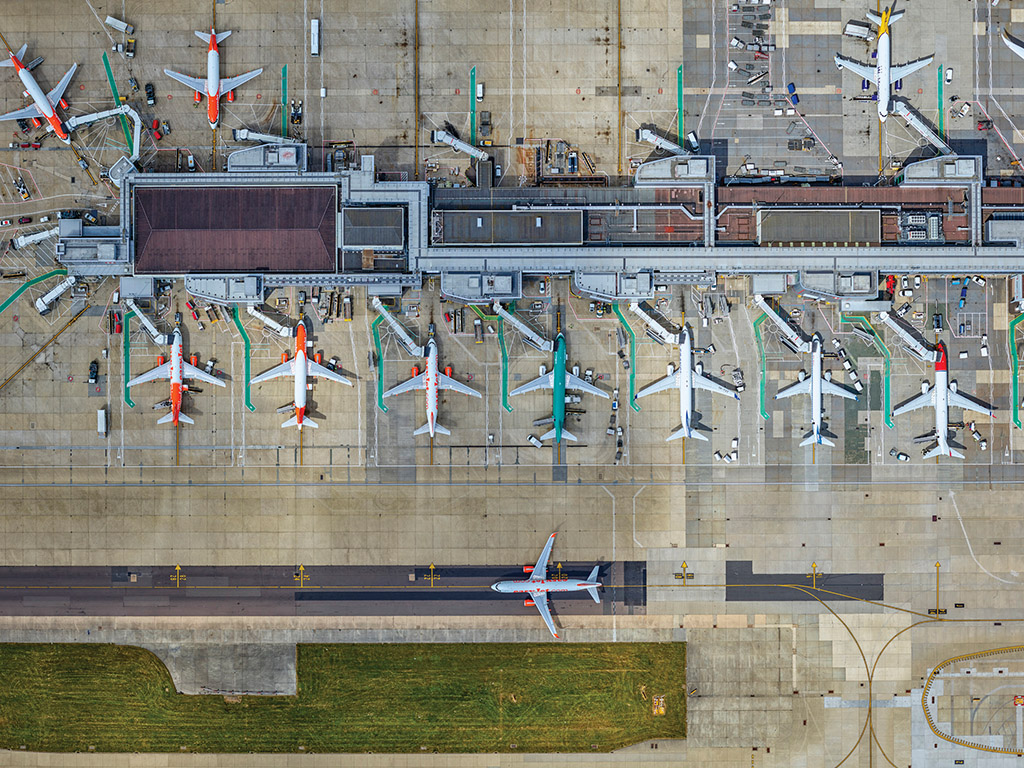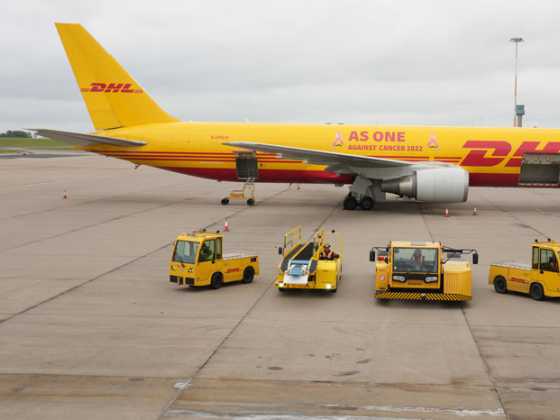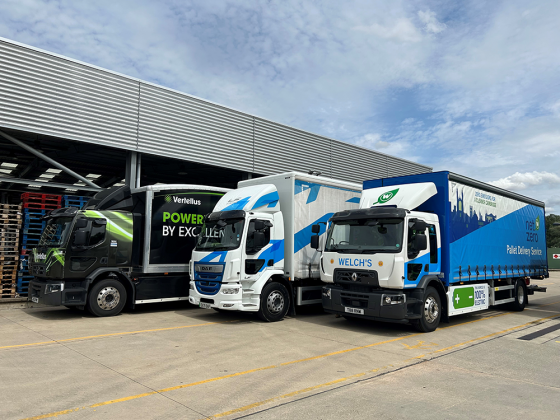A chat about Gatwick’s green goals

Gatwick has become a carbon neutral airport for its ground operations. GreenFleet talks to Rachel Thompson, sustainability manager at Gatwick Airport, to find out how its use of electric and hybrid vehicles, alongside its sustainable travel plans for staff and on-site waste processing plant, have played a key part in achieving the airport’s green ambitions
Gatwick airport has experienced record growth and now has more arrivals and departures per hour than ever before and welcomes over 44 million passengers a year.
In May this year, Gatwick was officially recognised as a carbon neutral airport through its use of 100 per cent renewable electricity and Gold Standard carbon credits to offset ground fuel emissions.
The airport has also published its Decade of Change report which tracks its progress against ten ambitious environmental and community-focused targets that it set itself over the ten years from 2010 to 2020.
GreenFleet talks to Rachel Thompson, Gatwick’s sustainability manager to find out about the airport’s use of low-emission vehicles and other green initiatives that have helped make the airport carbon neutral.
Explain the range of vehicles that make up your ground fleet?
Gatwick Airport Limited (GAL) has a ground fleet of around 500 vehicles, with around 60 per cent classed as specialist vehicles used in airfield, engineering and security activity.
We have begun a consolidation exercise as vehicles reach end of life, including replacing around 20 per cent of vehicles with electric or plug-in hybrids over the next two to three years. We have also joined the government’s Go Ultra Low Companies initiative.
There are several airside charge points to charge our electric vehicles. Existing charge points are connected into the Gatwick electricity network for which we purchase REGO (Renewable Energy Guarantees of Origin) certified electricity.
What role does your ground fleet play in reducing emissions of the airport overall?
GAL’s ground fleet is a small proportion of our emissions at around 1,100 tCO2e less than 10 per cent of emissions from GAL’s fuel use (Scope 1 emissions), the rest being natural gas for heating and some diesel for plant and backup generators.
Similarly, airport partners’ airfield vehicles emissions are a small proportion of third party ground transport emissions (currently estimated at three per cent), the remainder are mainly passenger and staff travel to the airport.
Explain how the electric car sharing service works.
Gatwick is the first UK airport to partner with Blue City, part of the Bolloré Group who are rolling out electric charging points and an electric car sharing scheme throughout London (already successfully implemented in Paris).
The London scheme is potentially game‑changing for air pollution (benefits already seen in Paris), and its roll out at Gatwick has many applications, not least the opportunity to expand the scheme into local Boroughs for passengers, employees and surrounding councils residents. This will also be a significant contributor to our Decade of Change by helping to reduce Gatwick’s carbon and micro‑particles footprint linked to gas vehicle
How did your electric taxi service come about?
Airport cars were innovative winners of the last taxi tender. They brought in considerable improvements, changes and innovation to the private hire/taxi fleet on the airport.
Airport Cars Gatwick (ACG) approached GAL with the initiative to introduce electric cars onto the airport, understanding and recognising the importance we placed on sustainable and environmentally friendly travel to the airport. ACG introduced the five electric Teslas as a first measure.
This is being continually reviewed with a commitment to bring in a further 50 electric or hybrid cars per year over the next three years giving over 150 electric or hybrid cars (over 60 per cent of the fleet). In addition, to improve air quality around the airport they have committed to programming the hybrid cars to run on electric only within 10kms of the airport, improving the air quality around Gatwick in particular.
The next round of car replacement will take place from November when the new hybrid Mercedes E-class estate will be launched.
How will your EV Infrastructure Study benefit the airport?
The study is looking at the short and medium term infrastructure needed to support increased electric, hybrid and other low emission vehicles (LEVs), in particular the electricity network infrastructure, energy storage options, charge point types and locations, and metering for cost recovery. It will support multi-year planning for uptake of LEVs in line with operational needs on a space constrained site.
How do you incentivise green travel for staff?
Gatwick offers a range of staff travel options and discounts for all airport workers to help incentivise staff to use public transport and other sustainable modes. We collaborate with our existing transport partners and proactively seek out new suppliers to continually expand and improve services to and from the airport. We work with other on-airport companies to inform staff about sustainable modes and public transport connectivity.
For our own staff, we offer a Ride to Work scheme in partnership with Evans Cycles providing tax savings and salary sacrifice to allow staff to purchase bikes and other equipment. We are currently reviewing our cycling facilities and exploring options to improve these to further encourage this healthy and sustainable way of getting to work.
Explain how your waste processing plant works?
Our new on-site Materials Recycling Facility, constructed and now operational in partnership with DHL, delivers two significant breakthroughs. It takes airport recycling rates to new heights by including a manual waste sorting conveyor which began operating in September 2016.
Together with reclassification of waste streams into ‘Dry’ and ‘Wet’, on‑site sorting is lifting the airport’s reuse and recycling rate to 60 per cent in 2017 and above 75 per cent by the end of 2018. In addition, by using small balers at our terminals and large ‘mill size’ bales to compress waste, there are 200 fewer industrial-size waste bin collections per day at the airport, reducing lorry vehicle journeys to external waste plants by 50 per cent.
The second breakthrough is our ability to convert non-EU airline waste and other organic waste into energy. The facility is the first at any airport in the world to be able to do this. Category 1 waste comprises food waste and anything mixed with it from non-EU flights. Its disposal is governed by strict rules that require specialist processing (until now, off-site) to protect against potential spread of disease and infectious material. Around 20 per cent of the Airport’s operational and commercial waste is Category 1.
To treat this waste, and other wet waste that cannot be recycled, the new facility incorporates an on-site dryer and biomass boiler. The waste is dehydrated and turned into solid biomass fuel which is used to generate heat for the dryer and for the facility buildings.
Looking ahead, as the facility will produce more biomass than is needed to heat it, we are also considering installing a second biomass boiler to provide heating for the North Terminal. Water recovered from the waste-drying stage is also used to clean waste bins, helping to reduce airport water consumption by two million litres per annum. The biomass boiler has been designed to operate to emission standards that are stricter than required by EU regulation. The facility is set to save £1,000 in energy and waste management costs for every day it operates.
How do you monitor air quality?
Our Decade of Change target is to maintain zero breaches of annual limit values for air quality at the airport, as measured by the real-time automatic monitoring station at the airport. On-airport continuous monitoring is done year-round at the eastern end of the runway. This real-time automatic monitoring station measures N02 and PM10 particulates.
Off-airport continuous monitoring at three sites in residential streets near the airport is conducted year-round in partnership with Reigate and Banstead Borough Council (RBBC). These three monitoring sites near the airport are part of the Horley Air Quality Management Area (AQMA) established by RBBC in 2002.






